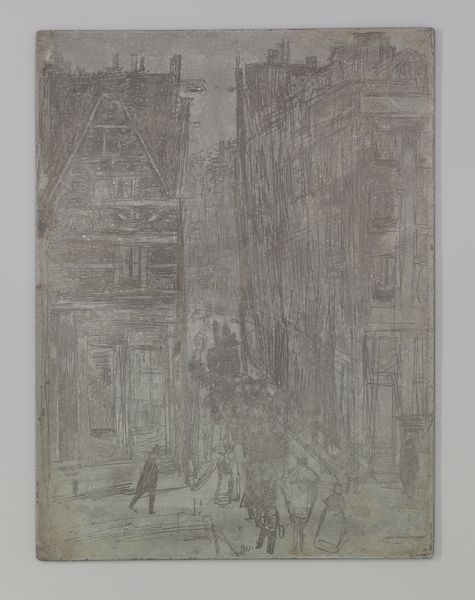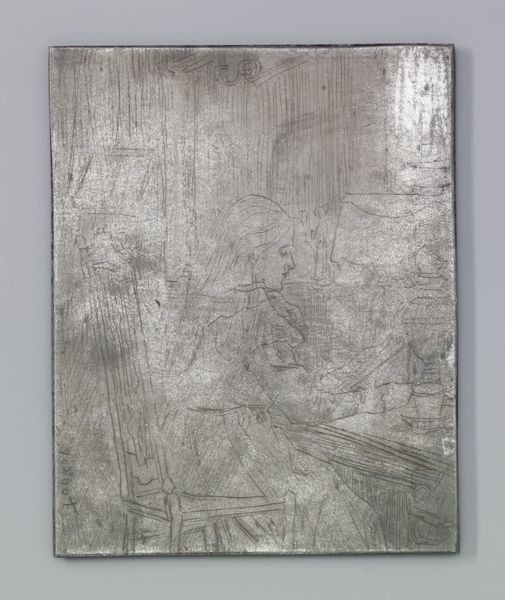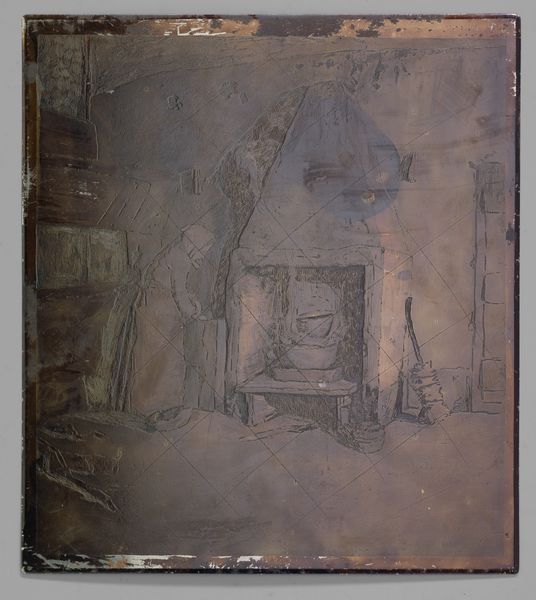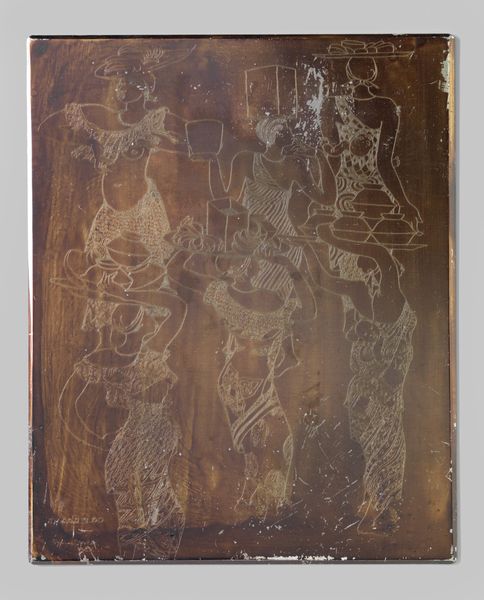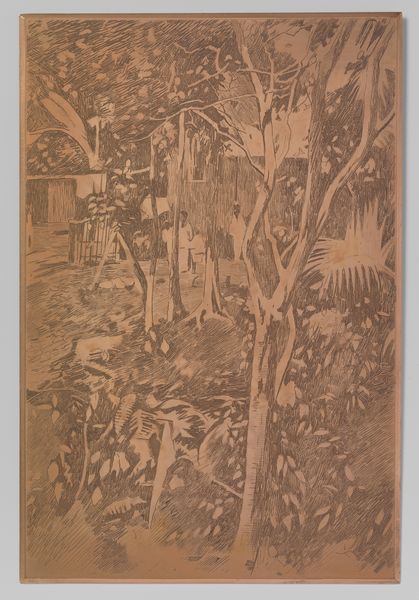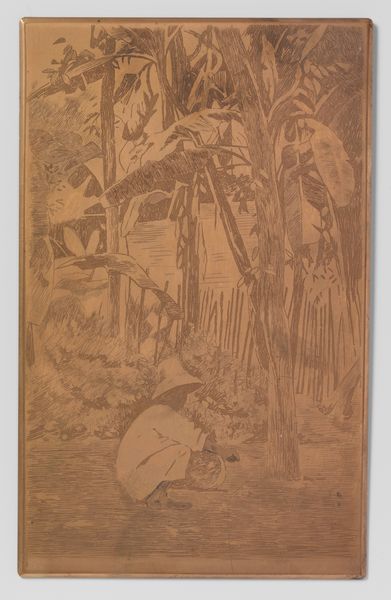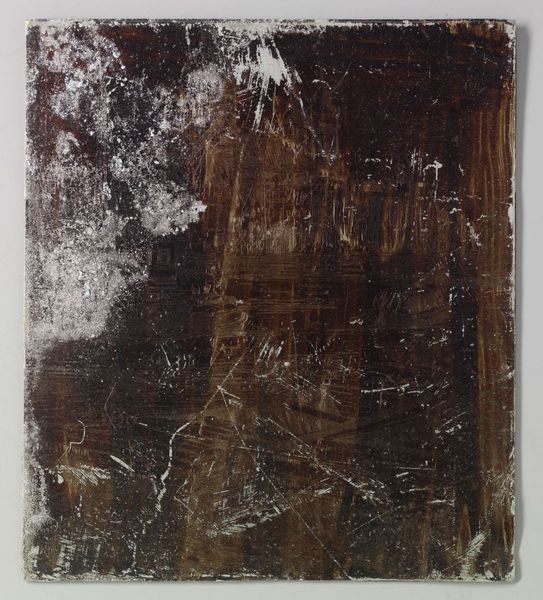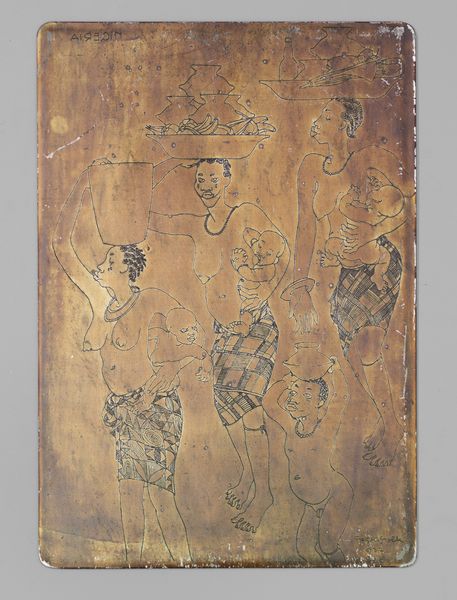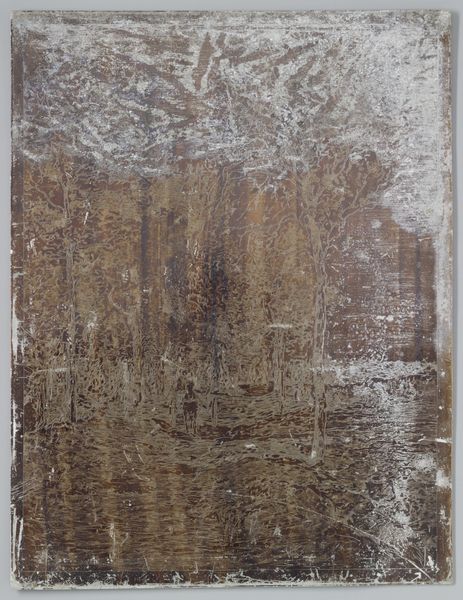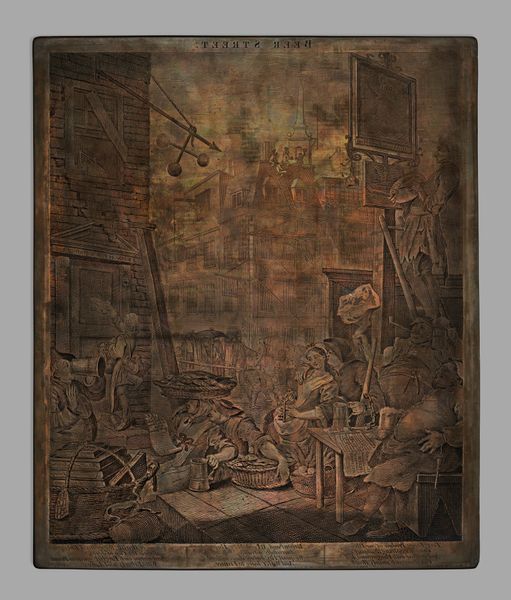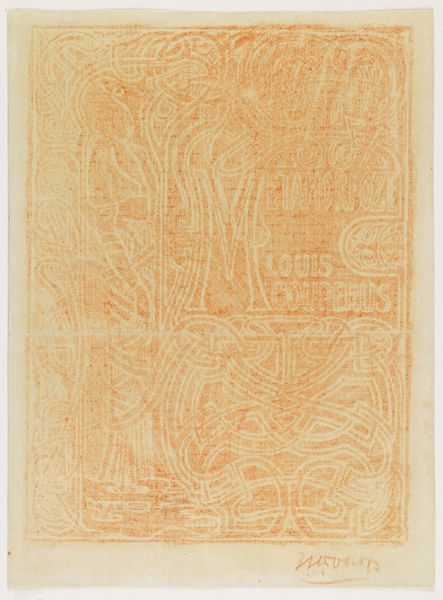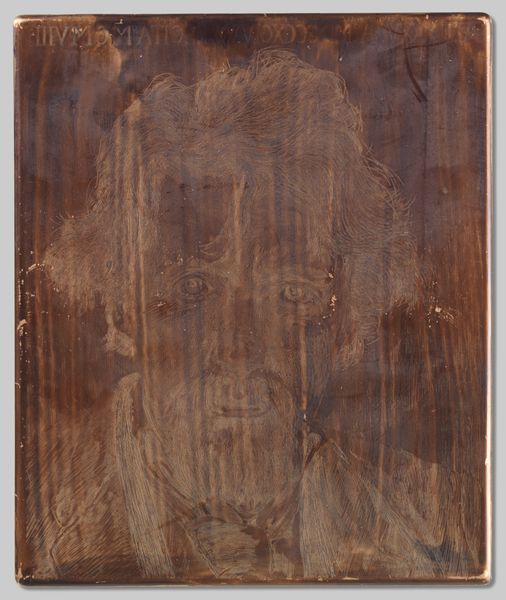
drawing, pencil, graphite
#
drawing
#
intimism
#
pencil
#
graphite
#
mixed media
#
watercolor
Dimensions: height 240 mm, width 155 mm
Copyright: Rijks Museum: Open Domain
Curator: This mixed-media drawing, crafted with pencil, graphite, and watercolor, is titled "Atelier." Floris Verster created it around 1890. The scene presents an artist's studio. Editor: There's a kind of faded elegance to it, isn't there? Like glimpsing a memory. All these delicate, fine lines build something substantial out of a dreamlike space. It looks almost like an x-ray of the atelier, revealing it as a workspace but also as an emotional refuge. Curator: The socio-economic climate for artists at that time placed increasing emphasis on capturing private life; interior scenes surged in popularity. Given its delicate medium, the "Atelier" invites reflection upon that era's intimism. In what way does it speak of gender and domesticity to you? Editor: You’re right. It feels very closed in and gendered. The clutter of the workspace itself takes center stage, doesn't it? Think of this domestic confinement reflected the constraints often placed on women at the time, dictating how they navigated their domestic spaces, and this work presents that through its interior composition. What strikes you about Verster’s style, though? Curator: What immediately comes to mind is that, instead of aiming for realistic precision, Verster used short strokes of pencil and thin washes of watercolor, building up tones and textures while prioritizing atmosphere. Also, in its composition there’s no strong central focus and its indistinct, muted tones certainly set a mood! Editor: True, it mirrors broader artistic movements questioning conventional approaches to representation. "Atelier" offers insights into Verster's social circles. After all, he spent the majority of his creative years near Leiden in the Netherlands. Curator: Viewing the artwork, it feels a moment of pause, offering space for thinking about labor—artistic or otherwise, and our contemporary engagement within such historical dialogues and power structures. What is your takeaway from this dialogue? Editor: I'm seeing anew the many lives and the rich tapestry of narratives held in "Atelier." What seemed merely a charming atelier now resonates as a multi-layered socio-historical account of gender, society, and selfhood at a specific time in the Netherlands.
Comments
No comments
Be the first to comment and join the conversation on the ultimate creative platform.

